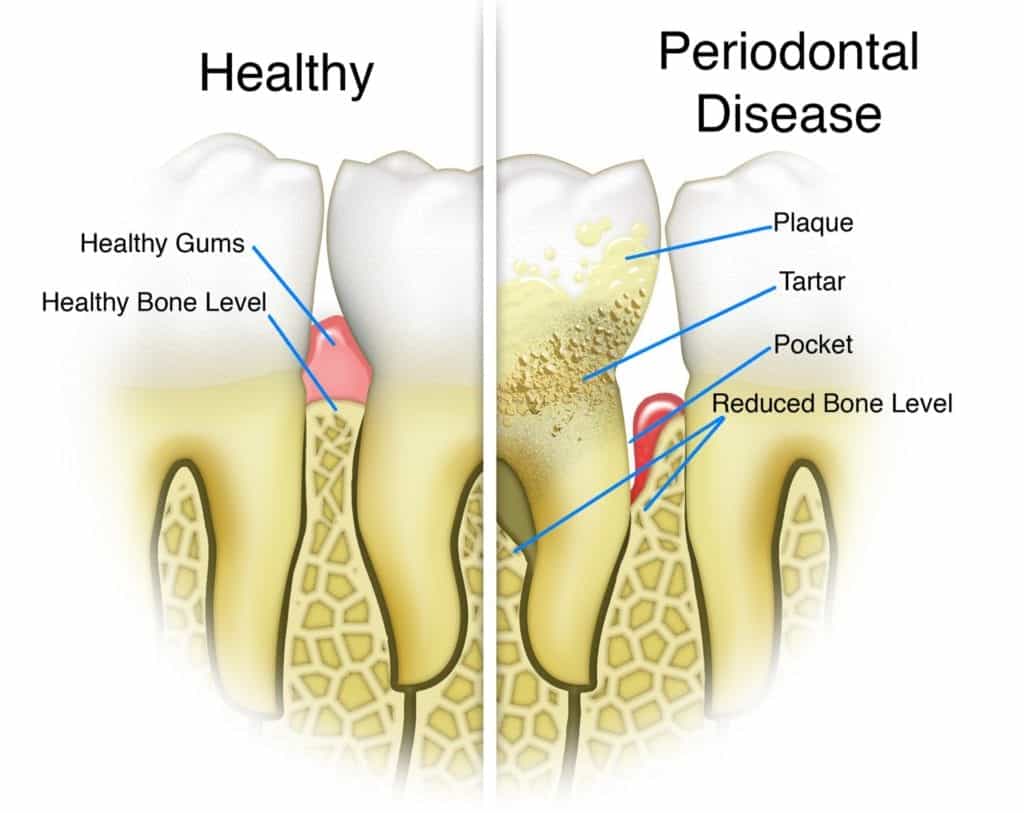In a report released by the Centers for Disease Control and Prevention (CDC) in 2012, it was revealed that half of American adults suffer from periodontal or gum disease.
What is gum disease?
Gum disease is an infection of the gums and is one of the leading causes of tooth loss. Unlike other dental problems, gum disease is virtually pain-free. This means that most patients who succumb to the disease are completely unaware of their existing condition.
What causes gum disease?
Gum disease is caused by the buildup of plaque. Plaque is a sticky form of bacteria that appears on the teeth. When plaque is not removed through proper oral hygiene and regular dental checkups, it will continue to build up and create toxins that can damage the gums. Gum disease forms below the gum line, creating small pockets that separate the gums from the teeth.

Periodontal disease has two stages: gingivitis and periodontitis.
Gingivitis is the early stage of gum disease. At this stage, the gums become red and swollen and can bleed easily. The good news is that at this stage, the disease can be treated through proper and regular brushing and flossing.
When gingivitis is left untreated, it can progress into periodontitis. Here, the gums and bones that support the teeth can become damaged. Infected gums can cause the teeth to become loose or fall out.
Who’s at risk?
Apart from people who do not practice good oral hygiene, there are some groups that are at high risk of contracting gum disease. These include:
- People who smoke or chew tobacco products
- Diabetics
- People who have ill-fitting bridges
- People with crooked teeth
- People with old fillings
- Pregnant women
- And patients using some types of medication including steroids, calcium channel blockers, cancer therapy drugs, anti-epilepsy drugs, and oral contraceptives.
What are the symptoms?
While gum disease can be virtually pain-free, there are a few symptoms that you can watch out for. These include:
- Gums that bleed easily
- Red, swollen, tender gums
- Gums that have pulled away from the teeth
- Persistent bad breath or bad taste
- Pus between the teeth and gums
- Loose or separating teeth
- Changes in your bite
- Changes in the fit of your partial dentures
Can gum disease be prevented?
Practicing good oral hygiene, along with regular dental checkups and periodontal examinations, are critical not only in preventing gum disease, but also in ensuring good oral and overall health. Make it a habit to brush and floss your teeth regularly. Eat a healthy and balanced diet. Visit your dentist regularly.
How is gum disease treated?
Treatment for gum disease depends on the severity of each individual case.
Among the treatments we offer here at Laurich Dentistry for gum disease are:
- Non-surgical treatments like at-home periodontal trays, and scaling and root planing (deep cleaning)
- Periodontal surgery and laser gum surgery
- Dental implants
If you are experiencing any of the aforementioned symptoms of gum disease, book an appointment with us at our Farmington Hills and Livonia Clinic.
At Laurich Dentistry, we deliver gentle, compassionate dental care that helps each patient achieve and maintain exceptional oral health and a beautiful smile while building long-term relationships with those we treat.




